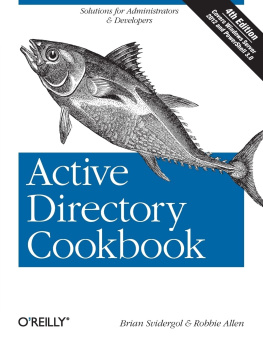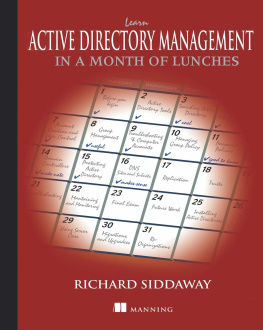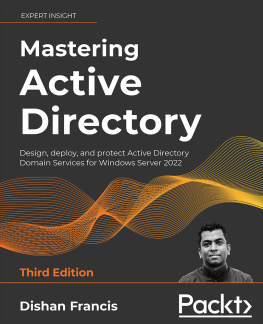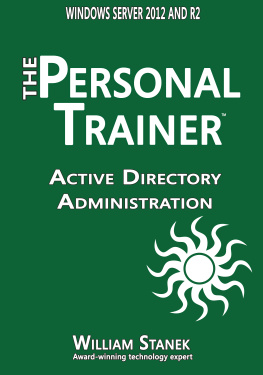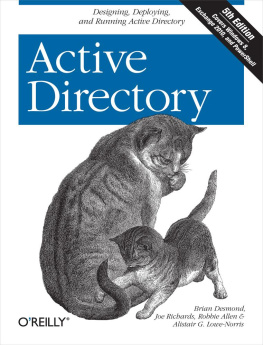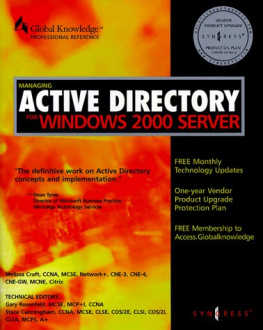Alistair G. Lowe-Norris - Active Directory, Second Edition
Here you can read online Alistair G. Lowe-Norris - Active Directory, Second Edition full text of the book (entire story) in english for free. Download pdf and epub, get meaning, cover and reviews about this ebook. year: 2003, publisher: OReilly Media, genre: Computer. Description of the work, (preface) as well as reviews are available. Best literature library LitArk.com created for fans of good reading and offers a wide selection of genres:
Romance novel
Science fiction
Adventure
Detective
Science
History
Home and family
Prose
Art
Politics
Computer
Non-fiction
Religion
Business
Children
Humor
Choose a favorite category and find really read worthwhile books. Enjoy immersion in the world of imagination, feel the emotions of the characters or learn something new for yourself, make an fascinating discovery.
- Book:Active Directory, Second Edition
- Author:
- Publisher:OReilly Media
- Genre:
- Year:2003
- Rating:3 / 5
- Favourites:Add to favourites
- Your mark:
Active Directory, Second Edition: summary, description and annotation
We offer to read an annotation, description, summary or preface (depends on what the author of the book "Active Directory, Second Edition" wrote himself). If you haven't found the necessary information about the book — write in the comments, we will try to find it.
When Microsoft introduced Windows 2000, the most important change was the inclusion of Active Directory. With many great benefits, it continues to be a huge headache for network and system administrators to design, implement and support. The first edition of this book, OReillys best-selling Windows 2000 Active Directory, eased their pain considerably. Now titled Active Directory, 2nd Edition, this book provides system and network administrators, IT professionals, technical project managers, and programmers with a clear, detailed look at Active Directory for both Windows 2000 and Windows Server 2003.
The upgraded Active Directory that ships with Windows Server 2003 has over 100 new and enhanced features and once again, OReilly has the answers to puzzling questions. While Microsofts documentation serves as an important reference, Active Directory, 2nd Edition is a guide to help the curious (and weary) understand the big picture. In addition to the technical details for implementing Active Directory, several new and significantly enhanced chapters describe the numerous features that have been updated or added in Windows Server 2003 along with coverage of new programmatic interfaces that are available to manage it. After reading the book you will be familiar with the Lightweight Directory Access Protocol (LDAP), multi-master replication, Domain Name System (DNS), Group Policy, and the Active Directory Schema, among many other topics.
Authors Robbie Allen and Alistair G. Lowe-Norris are experienced veterans with real-world experience. Robbie is a Senior Systems Architect in the Advanced Services Technology Group at Cisco Systems. He was instrumental in the deployment and automation of Active Directory, DNS and DHCP at Cisco, and is now working on network automation tools. Alistair is an enterprise program manager for Microsoft U.K. and previously worked for Leicester University as the project manager and technical lead of the Rapid Deployment Program for Windows 2000.
Active Directory, 2nd Edition will guide you through the maze of concepts, design issues and scripting options enabling you to get the most out of your deployment.
Alistair G. Lowe-Norris: author's other books
Who wrote Active Directory, Second Edition? Find out the surname, the name of the author of the book and a list of all author's works by series.


